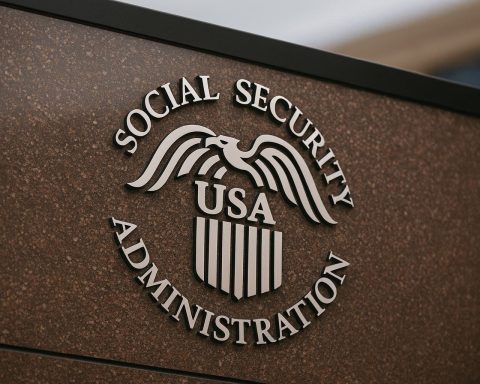On November 17, 2025, the traditional picture of retirement in America is colliding with some hard new numbers.
A recent analysis of the 2024 MassMutual Retirement Happiness Study found that retirees and pre‑retirees see 63 as the “perfect” age to leave work. The average retirement age today is about 62, right in that early‑60s window. [1]
But zoom out to the latest Social Security changes, 2026 retirement contribution limits, and fresh warnings about the program’s finances, and a different story emerges: retiring at 63 is often financially fragile, not ideal.
Below is a breakdown of what the new data and today’s news mean for anyone trying to decide when—and how—to retire.
Why 63 feels like the perfect retirement age
The MassMutual study found: [2]
- Most Americans say 63 is the ideal retirement age.
- Many are already close: average retirement age ≈ 62.
- 35% of pre‑retirees say their savings are behind where they need to be.
- About one‑third worry they could outlive their money.
That 63 “sweet spot” has emotional appeal:
- You’re still relatively healthy and active.
- You qualify for early Social Security (as early as 62).
- You may be burned out after decades of work and eager to reclaim your time.
But emotionally satisfying doesn’t automatically mean financially safe—especially in 2025.
The math problem: Social Security, Medicare and longevity
Under current U.S. law, “full retirement age” (FRA) for Social Security is 67 for everyone born in 1960 or later. [3]
Key mechanics:
- You can start as early as 62, but your monthly benefit is permanently reduced.
- If your FRA is 67 and you claim at 62, your check is cut by about 30% for life. [4]
- If you delay past FRA, you earn delayed retirement credits up to age 70, boosting your benefit roughly 8% per year. [5]
In other words, retiring at 63 often gives you:
- Smaller Social Security checks forever
- More years where you’re drawing on savings
- Fewer years of contributions into your retirement accounts
On top of that:
- Medicare doesn’t start until 65, so someone retiring at 63 may have to bridge two years of health‑insurance costs, often with pricey private coverage. [6]
- U.S. life expectancy is around 78.4 years on average, and many people live well into their 80s or 90s. [7]
Retiring at 62–63 can mean funding 25–30 years of living expenses—without the full Social Security benefit you could have earned by waiting.
That’s why the Moneywise analysis of the MassMutual data argues the realistic “sweet spot” is closer to 65–67, not 63, for many households. [8]
Today’s big retirement headlines (November 17, 2025)
Several developments hitting the wire today and in recent weeks show just how much the retirement landscape is shifting—often in ways that reward those who wait a bit longer than 63.
1. 2026 Social Security COLA: Benefits rise 2.8%
The Social Security Administration has confirmed a 2.8% cost‑of‑living adjustment (COLA) for 2026. That: [9]
- Lifts the average retirement benefit by about $56 per month starting January 2026
- Raises the taxable wage cap from $176,100 to $184,500
This is good news—but it doesn’t erase the bigger structural challenge:
Social Security’s retirement program is about seven years from insolvency. If Congress does nothing, current law triggers an across‑the‑board benefit cut of about 24%, roughly an $18,400 annual hit for a typical couple retiring in 2033. [10]
That looming cut makes early claiming at 62–63 even riskier, because you’re locking in a reduced amount that could later be cut again if lawmakers fail to act.
2. IRS boosts 401(k) and IRA limits for 2026
On November 13, the IRS released Notice 2025‑67, raising several key retirement limits for tax year 2026: [11]
- 401(k), 403(b), 457 & Thrift Savings Plan
- Employee contribution limit: $24,500 (up from $23,500 in 2025)
- Age‑50+ catch‑up: $8,000 (up from $7,500)
- So workers 50+ can put in up to $32,500 a year in 2026.
- Higher catch‑up for ages 60–63 (SECURE 2.0)
- Special catch‑up remains $11,250, meaning some older workers can contribute up to $35,750.
- IRAs
- Contribution limit: $7,500 (up from $7,000)
- Age‑50+ catch‑up: $1,100 (up from $1,000)
Translation: if you’re in your late 50s or early 60s and still working, the rules are giving you more room than ever to play catch‑up—but only if you’re still earning and saving, not already retired at 63.
3. Bank of America launches “401k Pay” to turn savings into income
Also announced today (Nov. 17): Bank of America is rolling out 401k Pay, a digital platform designed to convert 401(k) account balances into a predictable retirement paycheck. [12]
Key features include:
- Integrated recordkeeping plus income‑planning tools
- Help calculating sustainable income based on savings, taxes, COLA assumptions and required minimum distributions
- Flexible deposit options and payment frequencies for retirees
The launch underscores a major shift: the retirement system is moving from “how big is your balance?” to “how do we safely turn this into income for decades?” For anyone retiring in their early 60s, that income challenge is especially acute.
4. New warnings about how to “fix” Social Security
In a fresh report today, the Committee for a Responsible Federal Budget warns that plugging Social Security’s shortfall with general federal revenue—essentially bailing it out from the regular budget—would be a “costly mistake” that weakens fiscal discipline, increases debt, and risks higher interest rates. [13]
Instead, the report points to more targeted options: adjusting benefits, raising payroll taxes, or gradually increasing the retirement age further—all of which could hit future retirees, especially those planning to exit the workforce in their early 60s.
5. Year‑end Social Security “to‑do”: check your earnings record
Updated today, a widely‑shared FinanceBuzz piece urges Americans to check their Social Security earnings record before the end of 2025. [14]
Because your benefit is based on your 35 highest earning years, a single missing or incorrect year can permanently shrink your monthly check. The article walks through how to:
- Log into your my Social Security account
- Review each year’s income
- Flag missing or suspiciously low earnings
- Gather W‑2s and tax returns to correct errors
For anyone hoping to retire in the next few years—especially around age 63—getting this record accurate is crucial.
The other “perfect number”: Americans’ dream salary vs reality
Retirement age isn’t the only “magic number” Americans have in their heads.
A new survey of 2,000 U.S. adults by Talker Research for SurePayroll finds that the “perfect salary” for feeling content is about $74,000 per year. Roughly 1 in 5 say they’d need at least six figures to feel truly comfortable, and half say their current income doesn’t meet their needs. [15]
Meanwhile, the median weekly earnings of full‑time wage and salary workers in the U.S. were $1,196 in Q2 2025—about $62,200 a year before taxes. [16]
That gap between what people earn and what they feel they need helps explain why:
- Many households can’t save enough to retire at 63
- Pre‑retirees report being behind on retirement savings
- More people are considering working longer, delaying Social Security, or taking on side work in their 60s
If your income has never reached your personal “perfect salary,” your savings rate may not support an early‑60s retirement without serious trade‑offs.
So what is the right retirement age now?
There’s no one answer—but the data suggests a few guiding principles:
1. Treat 63 as a checkpoint, not a finish line
From Social Security’s perspective, 63 is early, not optimal:
- You’re still four years away from full retirement age if you’re 1960 or later.
- Every year you wait between 62 and 67 shrinks your lifetime benefit penalty. [17]
For many people, 63 is a great moment to:
- Stress‑test your retirement budget
- Finalize a Social Security claiming strategy
- Decide whether part‑time or phased retirement could bridge a few more years of saving
2. Focus on the big numbers that matter more than age
Instead of fixating on 63, zero in on these:
- Your replacement rate – How much of your working income your retirement income will replace (from Social Security + pensions + savings).
- Your longevity horizon – Plan as if you or your spouse will live into your late 80s or 90s. [18]
- Your contribution rate – Especially now that 2026 limits let many workers in their 50s and early 60s stash $24,500–$35,750 a year in employer plans, plus IRAs. [19]
Those numbers will shape your retirement far more than whether you stop working at 63 or 65.
3. Don’t base your plan on political promises—or clickbait
You’ve probably seen viral headlines like “Goodbye to retirement at 67” or claims that the government has already changed the Social Security age. Many of these pieces are misleading or poorly sourced.
What’s actually true today:
- Under current law, full retirement age tops out at 67 for those born in 1960 and later. [20]
- Lawmakers are debating ideas like raising FRA to 68–70, but no new law has passed yet. [21]
- Congress will likely have to act before the early 2030s to avoid automatic benefit cuts.
For now, base your plan on current law from official sources (SSA, IRS) and update as actual legislation—not rumors—comes through.
Practical steps if you still want to retire around 63
If 63 is your dream age, here are realistic moves to improve your odds:
- Max out the new 2026 limits if you can
- Aim to fill that higher $24,500 401(k) limit and use catch‑ups if you’re 50+. Even a couple of high‑contribution years can meaningfully move the needle. [22]
- Run a Social Security claiming comparison
- Compare retiring at 63 vs 65 vs 67 vs 70 using SSA’s online tools or a planner. Look at total projected lifetime benefits, not just the first year’s check. [23]
- Check—and fix—your earnings record before Dec. 31, 2025
- Log in to your my Social Security account and verify that each year’s wages are correct. If not, start gathering W‑2s and tax returns now; errors get harder to fix the longer you wait. [24]
- Plan for a health‑care bridge
- If you retire before 65, factor in ACA marketplace premiums or COBRA. A two‑year gap between 63 and Medicare can cost tens of thousands of dollars if you’re not prepared. [25]
- Consider phased retirement or part‑time work
- Many recent articles from retirement experts this month stress that working even a couple more years or earning part‑time income can dramatically reduce the pressure on your portfolio and Social Security strategy. [26]
Bottom line
The latest surveys show Americans still feel like 63 is the perfect age to retire. But the facts on the ground in late 2025—a 2.8% 2026 COLA, higher 401(k) limits, looming Social Security funding gaps, and new tools like 401k Pay—all point in a different direction.
For many households, the safest plan is no longer “retire as soon as possible and hope for the best,” but:
Save aggressively in your 50s and early 60s, lock in the new 2026 contribution room, fix your Social Security record, then aim for a thoughtful, planned retirement sometime between 65 and 67—unless your health or circumstances demand earlier.
63 might still work for you. But in 2025, it should be a conscious, informed decision, not just a number that “sounds right.”
References
1. moneywise.com, 2. moneywise.com, 3. www.schwab.com, 4. moneywise.com, 5. www.schwab.com, 6. moneywise.com, 7. moneywise.com, 8. moneywise.com, 9. www.ssa.gov, 10. www.crfb.org, 11. kpmg.com, 12. ffnews.com, 13. www.crfb.org, 14. financebuzz.com, 15. www.scrippsnews.com, 16. www.bls.gov, 17. www.schwab.com, 18. moneywise.com, 19. kpmg.com, 20. www.schwab.com, 21. www.cbo.gov, 22. kpmg.com, 23. www.schwab.com, 24. financebuzz.com, 25. moneywise.com, 26. www.fool.com










